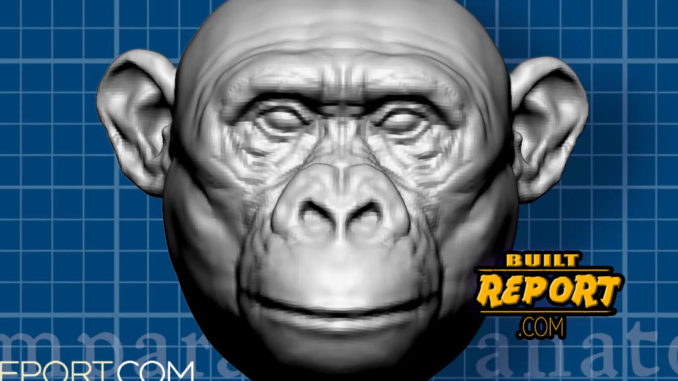
Transcript
There has been a paucity of comprehensive information regarding the Bili ape, chiefly due to the challenges posed by the research’s location within the Democratic Republic of Congo. The region has been marked by a tumultuous landscape fraught with civil conflicts, the menacing presence of poachers in the vicinity, not to mention the looming threat of Ebola. Initial reports purported that these enigmatic apes reached towering heights, approaching a stature of up to six feet six inches—a dimension that parallels many professional basketball players, an image that is undeniably colossal and mesmerizing. However, more recent accounts have revised this, suggesting that their true height ascends to a still noteworthy five feet five inches, which, while slightly diminished, surpasses the conventional chimpanzees that occupy most people’s awareness.
Another area of inquiry pertained to their reputed status as formidable adversaries of lions. Nonetheless, rigorous examination through scat analysis—wherein the dietary composition of the apes is meticulously scrutinized—has yielded no trace of substantial feline remains. While a solitary report mentioned instances of the Bili apes scavenging a leopard on a solitary occasion, substantial evidence supporting the notion of habitual lion or leopard predation remains conspicuously elusive.
Initial conjecture also veered towards a belief in the existence of a unique hybrid, conceived from the union of chimpanzees and gorillas. However, contemporary revelations propose a closer association between the Bili apes and the eastern chimpanzee, identified scientifically as Pan troglodytes, thus dispelling any direct lineage connection to the bonobos, though aligning them more closely with the familiar, conventional chimpanzees recognized by the majority.
For a visual representation of a hypothetical hybrid between the gorilla and the chimpanzee, one can turn their gaze towards these intriguing morphs. One of the most noticeable distinctions pertains to ear size, where chimpanzees display notably larger and more conspicuous ears. Ears among chimpanzees may exhibit variations between individuals, while bonobos themselves present differing ear configurations compared to their Pan troglodytes counterparts, who share a lineage with the Bili apes. In contrast, gorillas uniformly possess more diminutive ears, with little divergence discerned among their kind.
Significantly, gorillas display larger crania, particularly pronounced in the development of the trapezius and the extensive neck musculature, amalgamating to form a colossal mass that rests atop their shoulders. This fusion of head and neck attributes presents a distinctive aspect. In contrast, chimpanzees possess a sagittal crest, albeit with some variation, and when observed from the front, the configuration may occasionally appear recessed, as the cranial area is surrounded by substantial musculature anchored to the sagittal crest, thus accentuating the lateral prominence. A similar characteristic is observable among bald chimpanzees, accentuating the morphological distinction.
Moreover, chimpanzees display more prominent muzzles, an attribute that may be influenced by fleshy tissue as well as bony structure. Their mouths project more substantially, similar to their characteristic ears, forming a distinctive signature. Notably, there are resemblances and disparities between the nasal bridges of gorillas and chimpanzees. Chimpanzees possess broader nasal bridges, whereas gorillas exhibit narrower nasal bridges. Moreover, the noses of gorillas tend to descend closer to the mouth, yielding a shorter distance between the lips and the lowest point of the nose. Chimpanzees, conversely, manifest a more prominent projection, where the muscular structure surrounding the mouth—specifically the orbicular oris muscle—affords a greater expanse between the lowest segment of the nose and the upper lip, yielding a more pronounced mien.
Furthermore, gorillas exhibit relatively diminutive eyes when evaluated in proportion to their overall cranial size, while both gorillas and chimpanzees feature robust brow ridges. Gorillas, however, are distinguished by their more robust brow ridges and greater periocular protection. Their foreheads protrude more prominently, and their cheekbones project forward to a greater extent in comparison to chimpanzees. Gorillas further exhibit larger jaws, which constitute another noticeable distinction between these two primate species.
Subtle yet discernible observations include the prominence of the mentalis muscle beneath the chin, which emerges more distinctly in gorillas than in chimpanzees. This muscle, characterized by a round, ball-shaped or orbicular configuration, tends to generate a more pronounced impression within the gorilla’s physiognomy as opposed to that of the chimpanzee.
Indeed, this method of morphing back and forth between the representations of chimpanzees and gorillas serves as an invaluable tool in the exploration of comparative anatomy. It offers an intriguing means of examining nuanced anatomical distinctions, and while this particular application remains relatively underutilized, its potential for unraveling the intricacies of anatomical divergence persists as an area of great promise.




Be the first to comment